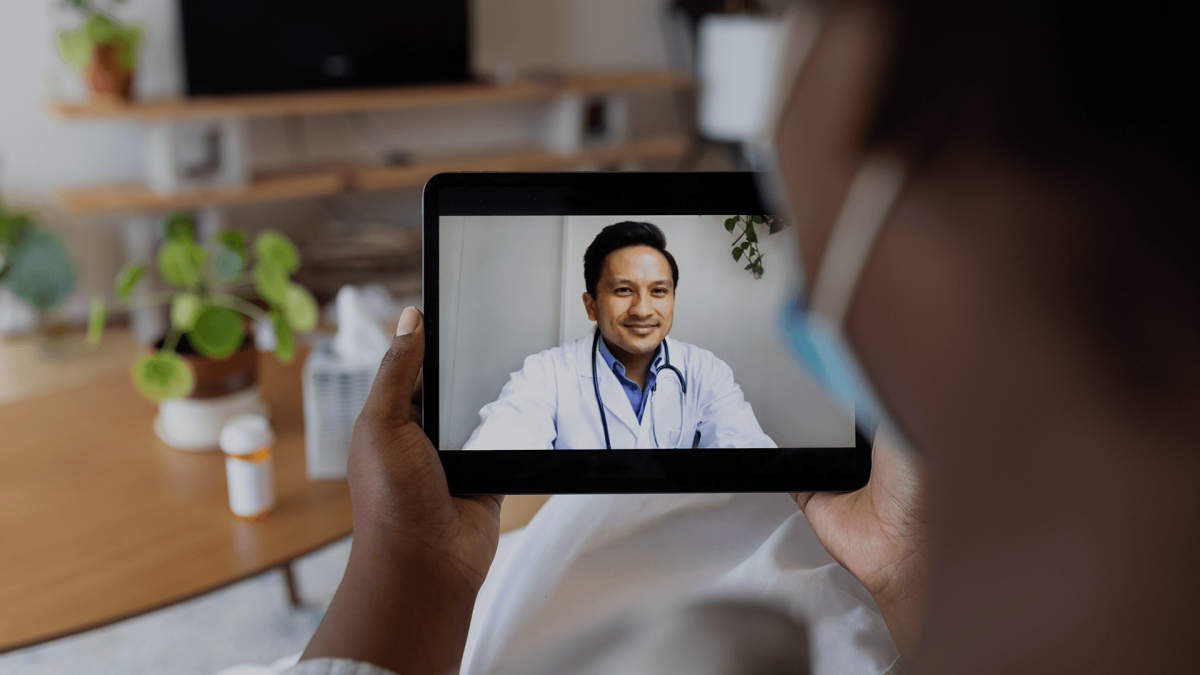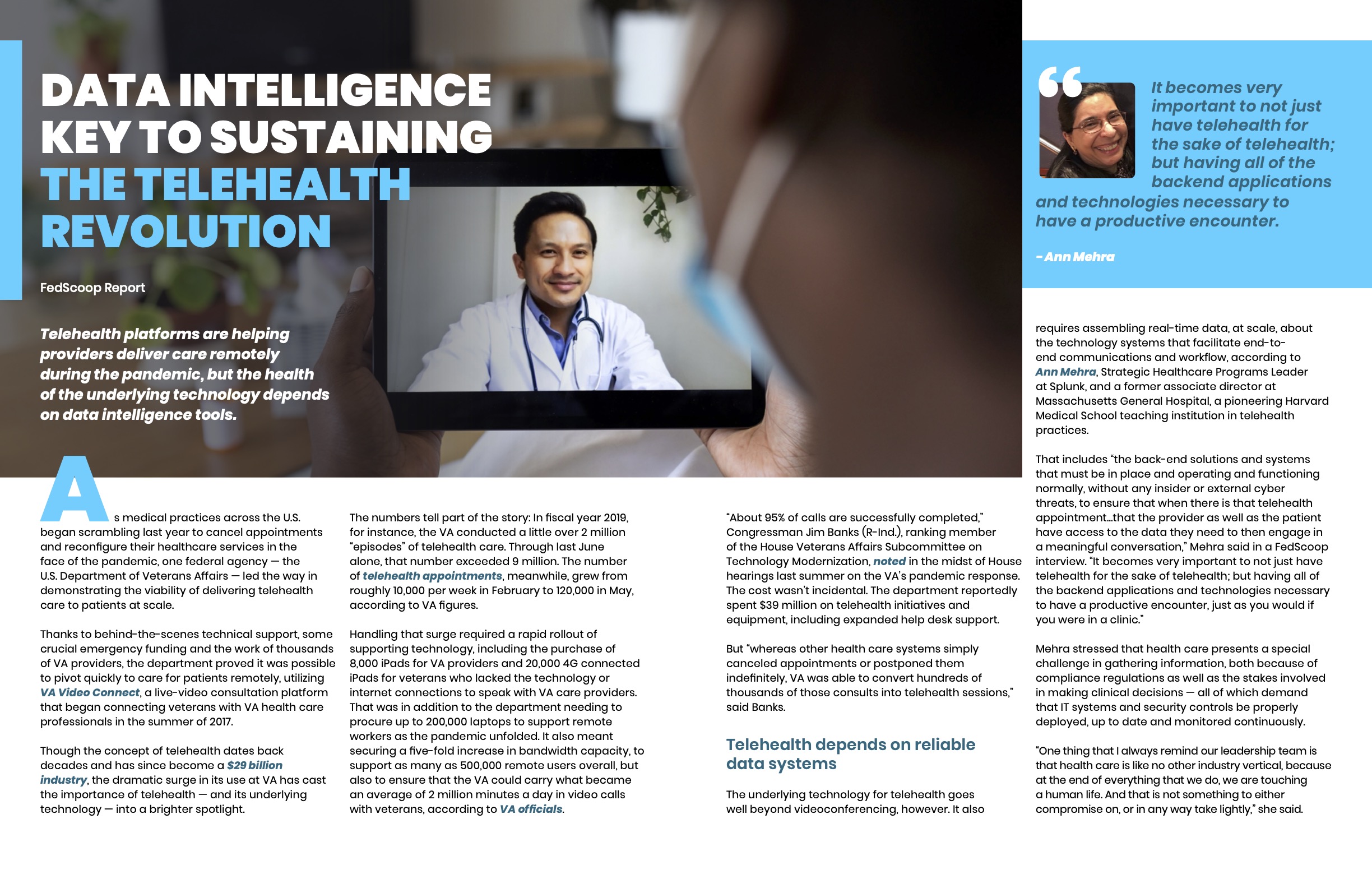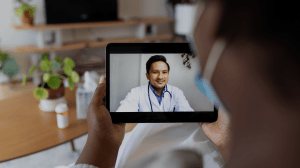- Sponsored
- Sponsored Content
Sustaining telehealth services with data intelligence

The use of electronic telehealth platforms by public and private health care organizations have become essential to delivering care remotely during the pandemic. They’ve also demonstrated a promising way to deliver health care at scale — especially as telehealth adoption gains wider acceptance by patients and doctors.
However, the underlying technology that is required to make telehealth a sustainable, long-term solution depends both on data intelligence tools and security controls to be properly deployed, according to Ann Mehra, strategic healthcare programs leader at Splunk, and a former associate director at Massachusetts General Hospital. Telehealth goes well beyond videoconferencing. It requires assembling real-time data — at scale — to facilitate end-to-end communications and workflow.

Read the full report.
“Health care presents a special challenge in gathering information, both because of compliance regulations as well as the stakes involved in making clinical decisions — all of which demand that IT systems and security controls be properly deployed, up to date and monitored continuously,” she says in a new FedScoop report, underwritten by Splunk.
Mehra describes how health care organizations initially raced to scale up virtual appointments. The result, however, was a swift realization that their systems weren’t configured to handle the added volume — in some cases, services were ground to a halt.
The report cites an example of the new volume demands from the U.S. Department of Veteran’s Affairs which had already launched a live-video consultation platform in the summer of 2017. In fiscal year 2019, the VA conducted a little over 2 million “episodes” of telehealth care. That number grew from roughly 10,000 per week in February 2020 to 120,000 per week by that May, according to VA figures cited in the report.
This level of behind-the-scenes technical support demonstrates the need for a modern and secure platform to manage capacity, interoperability, security and risk, the report argues.
Mehra shares how Splunk is working with their health care partners to more fully assess the security and reliability of their IT ecosystems.
Through Splunk IT Service Intelligence, they provide organizations of all sizes the ability to “attain end-to-end visibility of the services operating on their networks in real time; identity abnormalities and perform root cause analysis; and perform automated remedial actions to streamline incident resolution,” she says.
The report describes Splunk’s “data-to-everything” platform which allows organizations to ingest machine data, non-machine data, structured and unstructured data and turn it into actionable insights. “As we ingest more of this historical data, we then can start to apply AI and machine learning… and predict over time how the system will perform,” says Mehra.
The platform ultimately helped one of Splunk’s customers decrease teleconference call failures from thousands per day to less than 10. It also improved bandwidth and call capacity from 50% to nearly 100%. And it exposed unknown interoperability gaps and extended visibility into remote network user access to improve communications.
That enhanced level of assurance will become more essential as health care agencies and providers continue to embrace telehealth as a model for delivering care more efficiently.
“It becomes very important to not just have telehealth for the sake of telehealth; but having all of the backend applications and technologies necessary to have a productive encounter, just as you would if you were in a clinic,” she says.
Learn more about how Splunk can help your agency better prepare for the data demands of today’s modernized health care systems.
This article was produced by FedScoop and StateScoop and sponsored by Splunk.






